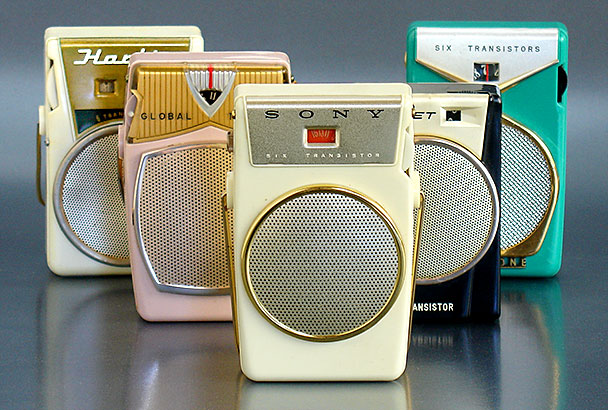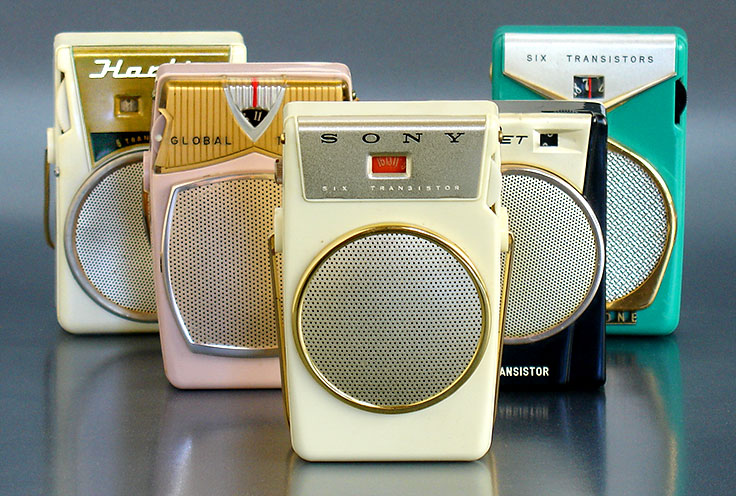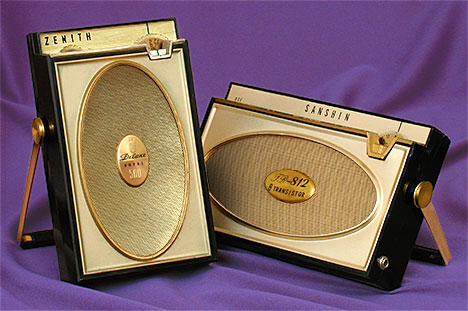Collecting Knockoffs and Ripoffs
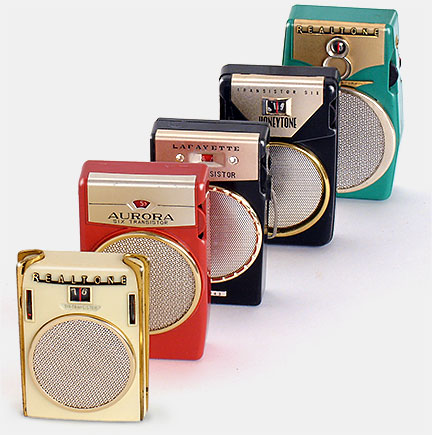
Knockoffs aren’t the same as variants (covered elsewhere in these pages). Knockoffs “borrow” the design of another, different brand. They can run the gamut all the way from products that reflect a little too much design influence from a competing product to those that blatantly rip-off, copy, or counterfeit a competitor.
A watch made to look similar to a Rolex, with another name, that’s a knockoff. One that is so similar as to make the casual observer think it is a Rolex is a copy. And one that copies everything including the name is a counterfeit. But a fake Rolex watch that says “Rolecks” on it— well now, that’s just funny.
Often amusing in this and other ways, knockoffs are, as harsh at this sounds, the work of hacks with no greater hope than to ride the coattails of somebody better than them.
Knockoffs find their place in the market by appealing to people where one or both of these factors are present: buyers are wanting something they can’t afford and/or they are willing to compromise quality to get it.
The photo of radios arranged diagonally shows knockoffs of the Sony TR-610 transistor radio from 1958. This Sony model was the first transistor radio from Japan to sell in huge quantities, making it a success others sought to emulate. Here are some of the “emulators”. From front to back: Realtone TR-803, Aurora, Lafayette (identical to the Aurora but “deluxe” with “diamonds” on the front and a decorated trim ring), Honeytone G-606, and yet another Realtone, the TR-1088.
In front of the next picture stands the actual Sony TR-610. Behind it are still more emulators—and there are plenty more: the Harlie TR-661, Global GR-711, Sunset 666 (Hong Kong), and Realtone TR-801.
We see shameless knockoffs and lack of originality everywhere today from phones to cars to architecture. But as you can see, this is nothing new.
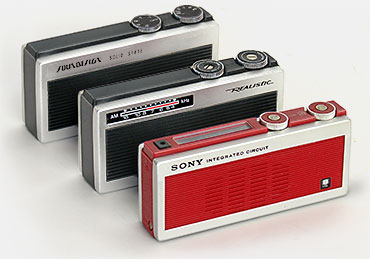
Here is another Sony original design, the ICR-200, a pioneering model in a couple of ways— it was rechargeable (with permanently installed batteries) and it contained an integrated circuit. This was one of the first products to use an “IC.” Quick to rip it off with neither the rechargeable batteries nor the IC were these two pretenders and our Shame-On-You award goes to both of them.
First to Radio Shack, maker of the Realistic brand. Then to Soundesign, a company that was previously known as Realtone and is today known as iHome. Their long history of “borrowing” from others continues as even their name makes obvious (ripping off the iTunes, iPod, and iPhone Apple brands).
The Zenith Royal 500H is arguably the best sounding and best performing transistor radio ever made. And it was expensive ($59.95 in 1961). Though I’m
not wild about its styling, many people were, including the folks at Sanshin (Japan) who committed a blatant, premeditated, 90 degree robbery on this Zenith.
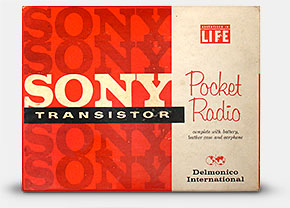
This is the original box in which early examples of the Sony TR-610 were sold in the U.S. Sony was still a small company then and their radios were distributed in the U.S. by Delmonico International. Delmonico made this box, playing it pretty loose with Sony’s new logo. That carelessness and other problems with Delmonico led Sony to set up their own distribution arm in America.
Apple’s iNames aren’t the only things we’ve seen “borrowed” from Apple. Lawyers can argue the details endlessly, but it cannot be denied that, broadly speaking, Android is to Apple’s iOS what Windows was to the MacOS: a knockoff, more or less just like the other examples you see here. No? Then consider that if iOS had never existed, what would Android look like? Would it exist at all? And if the iPhone had never existed, what would a Samsung phone look like today?

Here’s a fat little example of what Samsung was doing before Steve Jobs showed them what a cell phone could look like.
Well! — How did I get to be so opinionated about knockoffs? Well, I’ll tell you. I was shortchanged by one at a very tender age and it really made an impression. For my fifth birthday I desperately wanted a particular present from my parents—the Mattel Official Detective Shootin’ Shell Snub-Nose .38 and Shoulder Holster. I’m sure the gifts they got me were very generous (they always were), but in the gun department I got a look-alike knockoff of the Mattel gun that lacked all the cool details of the real thing.
I’m afraid I was something less than gracious and let my disappointment show. Despite my ingratitude, my parents took it all in stride and a couple of months later at Christmas I received the real deal (you can see it here).
When I was older I came to realize why my parents were so understanding. My mother was a brand buyer. No generic anything was ever in our house. And she was particular. She washed clothes in “New Blue” Cheer and wouldn’t use Tide if you gave it to her free. She knew what she wanted and had no use for anything else. So if I wanted a particular fancy toy, a name-brand Mattel toy, well, all right then. Why didn’t you say so?
While knockoffs are fun to collect, I avoid buying or using new products that are knockoffs (and they are everywhere!). Not only is it distasteful to me to give money to thieves, but I have found that people with no moral qualms about stealing design also have no moral qualms about cheating their customers as to quality.

